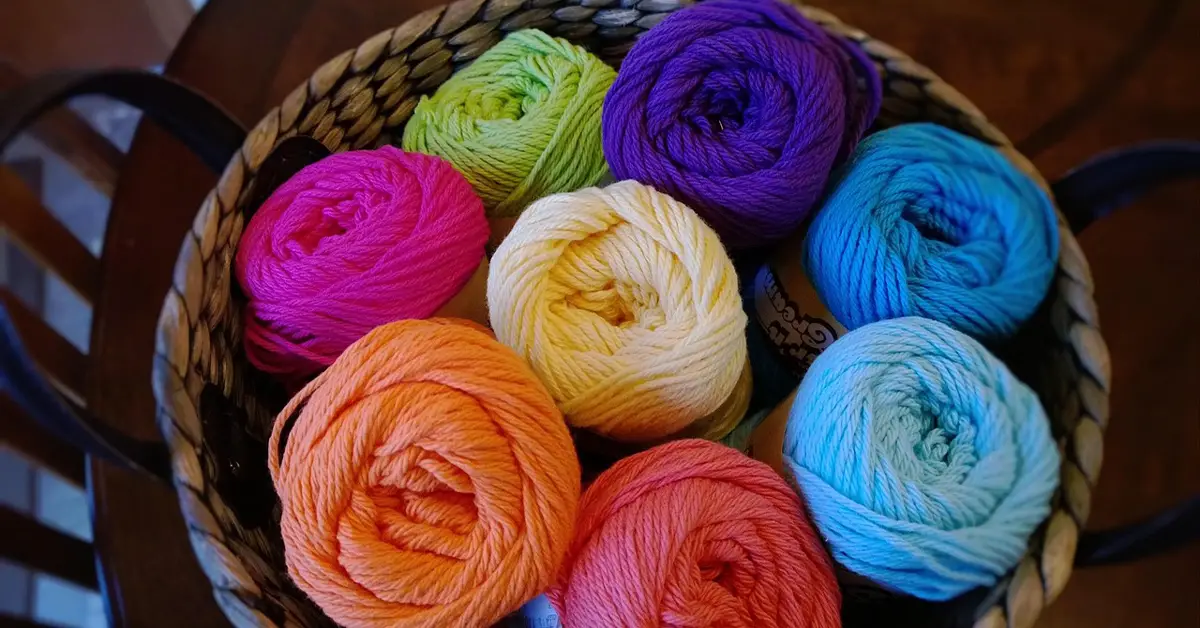On average, one pound of wool can yield approximately 256 to 560 yards of worsted weight yarn. Thicker yarns, like bulky or chunky, will produce fewer yards, while thinner yarns, such as lace or fingering weight, can yield more yards. It’s important to note that these estimates are approximate and can vary based on individual spinning preferences and techniques.
Understanding Yarn Production
When it comes to understanding yarn production, there are several aspects to consider, from the raw material to the spinning process, and the factors affecting the final yarn quality.
- Raw Material: Wool is a popular natural fiber obtained from sheep, used in producing various types of yarns. A sheep’s wool is typically sheared once a year and can weigh around 7.3 lbs of grease wool.
- Washing and Preparing: The sheared wool needs to be thoroughly washed and prepared to remove dirt, debris, and lanolin. It is estimated that about 5 lbs of wool can be obtained after washing from the original 7.3 lbs of grease wool.
- Spinning Process: Wool is spun to create yarn with varying thickness levels, which ultimately affects the yardage produced. Thicker yarns will result in less yardage compared to thinner ones.
Exploring Wool as a Fiber
- Wool is a highly sought-after natural material for its warmth, durability, and versatility in textiles, with uses ranging from clothing to rugs and even insulation.
- “Sheep wool is a preferred fiber because it is strong, resilient, and resistant to shrinking” – RaisingSheep.net.
- Wool is biodegradable and sustainable, being a renewable resource that grows back on the sheep after being shorn.
- The fiber’s incredible insulating properties keep you warm in the winter and cool in the summer, making it an ideal material for all-season garments.
- Wool is hypoallergenic, flame resistant, and water repellent, adding to its desirability as a fabric choice.
- Owing to its natural elasticity, wool fibers can return to their original shape after being stretched or creased, offering comfort and lasting garments.
- The range of wool types, including fine Merino and coarser breeds, allow for a variety of textures and uses in the production of yarn and textiles.
- The process of turning raw sheep fleece into yarn involves cleaning, carding, and spinning, with about 64% of scoured fleece weight ending up as spinnable fiber according to WoolMaven.com.
Yarn Weight and Yardage Calculations
- Yarn weight and yardage calculations are important for estimating the amount of yarn required for a specific project or determining leftover yarn after finishing one.
- Two key pieces of information are required: the weight of the entire skein and the yardage of the skein, both of which can usually be found on yarn labels.
- To calculate yarn yardage by weight, take the original number of yards, multiply by the remaining weight, and divide by the total weight of the full skein.
- Invest in inexpensive tools such as a yarn scale and a Wraps Per Inch (WPI) measurement device, to accurately weigh yarn and determine its gauge.
- Create a well-organized yarn stash with proper labeling to keep track of your leftover yarns, making future projects easier and more efficient.
Factors Affecting Yarn Production from Wool
- Fiber Diameter: The diameter of wool fibers directly affects its ultimate use; finer wool is used in high-quality cloth, while coarser wool is used in carpets. Fiber diameters can range from less than 17 microns to more than 40.20, impacting its quality and price.
- Wool Grading Systems: Wool is sorted into grades based on factors like diameter, length, and overall quality. The grading systems include the blood system, the counts system, and the micron system, which all impact the estimated yarn yield.
- Length of Wool Fiber: The longer the wool fibers, the more versatile and valuable the yarn produced. Longer fibers (combing) are processed into filler yarn and cloth, while shorter fibers (clothing)are best for knitting, crocheting and other crafts.
- Shearing Frequency: The frequency of shearing can greatly impact the yarn yield; for example, sheep sheared more than once a year will produce shorter wools than those sheared annually.
- Wool Quality and Breed: The breed of sheep and the quality of their wool significantly affect yarn production; some breeds provide more valuable wools such as Merino and Rambouillet, while others produce lower-quality wool with shorter fibers.
- Sheep Management: The way a producer manages their sheep affects fiber length and the fleece’s value. Proper shearing techniques and maintaining good health will produce higher yields and better quality yarn.
Estimating Yarn Production
- One pound of wool can produce varying amounts of yarn based on several factors, such as the type of wool, processing, and spinning methods.
- A standard worsted yarn can yield approximately 1g/yard, while other weights like laceweight may offer more yardage.
- Processing raw fleece includes removing dirt, debris, and lanolin, which can reduce the initial weight by around 50%.
- Wool types are traditionally graded by Bradford Count, measuring how many hanks (560-yards) can be spun from a pound of wool.
- “Roughly Sixty is a middle of the road wool, so you could theoretically spin somewhere around 100 miles of yarn from one fleece if it was relatively clean and quite fine.” – MetaFilter user, Kattullus.
Average Yarn Yield for Common Wool Types
- Fine Wool: Ideal for lightweight and delicate garments, fine wool can yield around 64% of its scoured fleece weight as usable yarn. With a clean wool yield of 5 pounds, you can expect to produce approximately 51.2 ounces or 25.6 two-ounce skeins.
- 1/2 Blood Wool: A slightly coarser wool, half blood wool is still capable of producing versatile garments. Typically, the yield may range from 55% to 60% of its scoured fleece weight.
- 3/8 Blood Wool: Used for mid-weight garments, 3/8 blood wool can render around 50% to 55% of its scoured fleece weight as spinnable fiber, providing a slightly lower yarn output compared to finer wools.
- Common and Braid Wool: Obtained from long-wool and fine-wool breeding, common and braid wool is perfect for heavy outerwear or upholstery. Yielding around 40% to 45% of its scoured fleece weight as yarn, it can still achieve a substantial output for various projects.
Factors Influencing Yarn Weight and Yardage Variations
- Wool Quality: High-quality wool will generally produce more yards of yarn per pound. Ensuring that your sheep produce the best quality wool is essential to achieve better results in yarn production.
- Wool Grade: Finer wools typically yield more hanks of yarn per pound compared to coarser wools. Merino sheep produce fine wool, while other breeds can produce wool with larger diameters, used for carpets and other non-garment purposes.
- Fiber Diameter: As diameter increases, the length of fiber needed for combing increases, thus affecting the total yardage. Micron measurements provide a refined grading system, ranging from less than 17 microns to more than 40.20.
- Shearing Frequency: Sheep sheared more than once a year will produce shorter wools than those sheared annually, affecting the overall yarn production.
- Thickness: The thickness of the wool can affect the yardage, with some wools being thicker and others thinner. This is accounted for in the yardage equivalent chart, based on the assumption that one yard of rug hooking wool weighs about 14 ounces.
Conclusion
In conclusion, determining the yarn yardage from an unlabeled skein involves measuring the wraps per inch (WPI) and determining the weight in pounds. By identifying the gauge of the mystery yarn and multiplying the weight in pounds by the average number of yards per pound, we can estimate the total yarn yardage. It is possible to make money from sheep wool, with the average price per pound for a wool clip being around $20.

